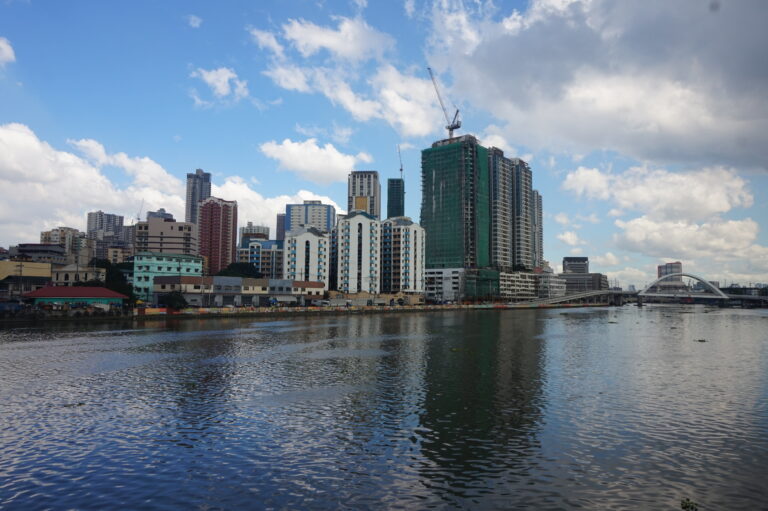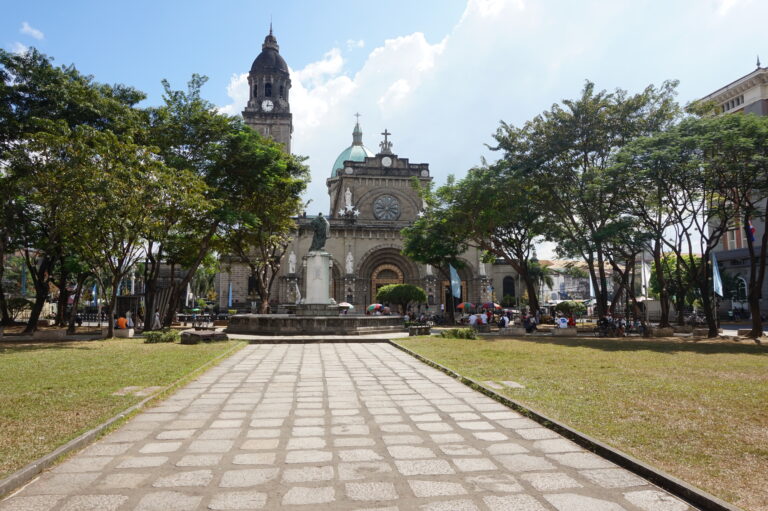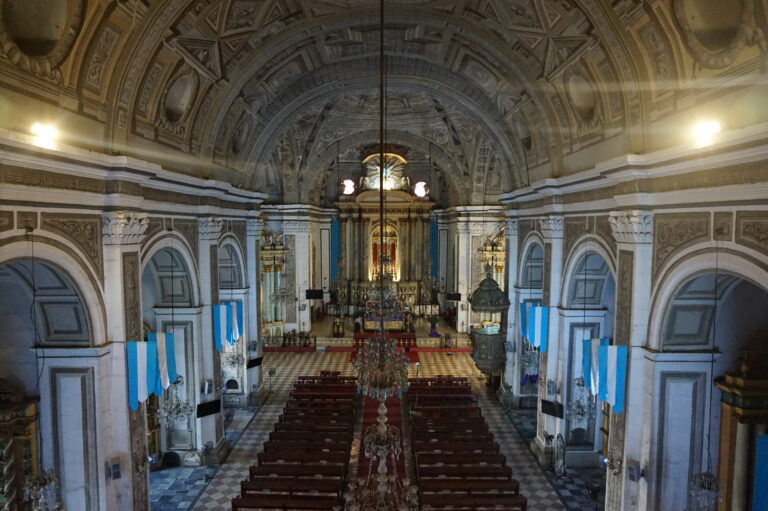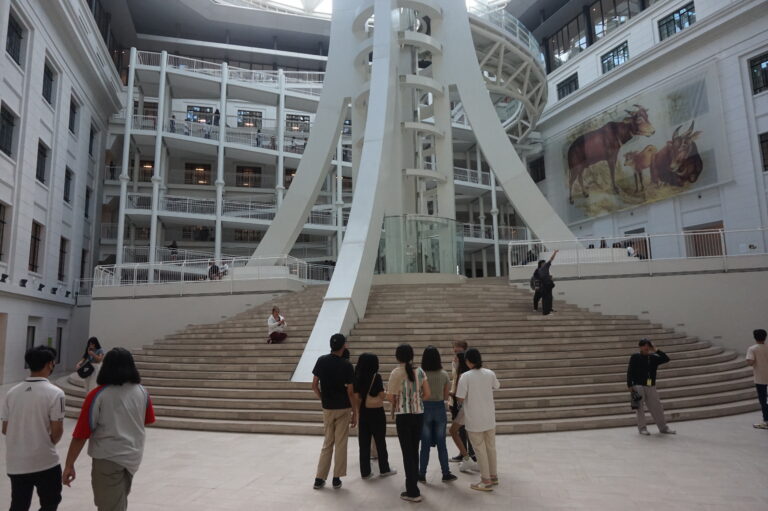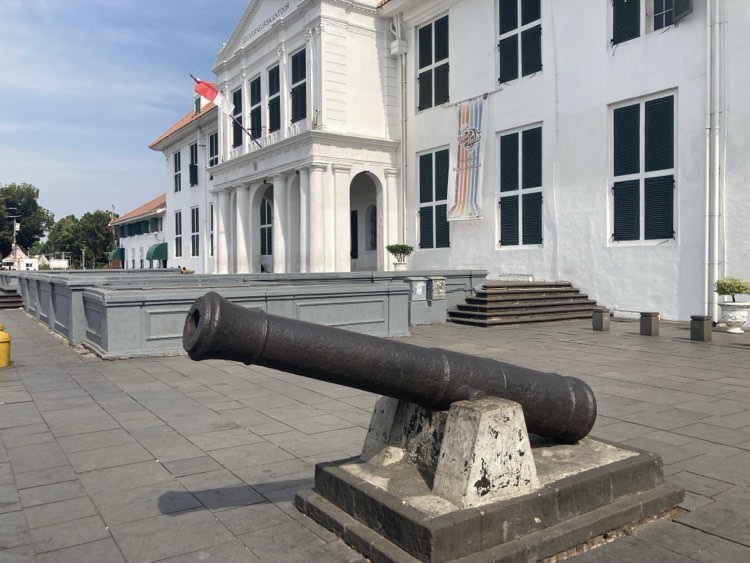Complete Visitor Guide to the National Museum of Fine Arts Manila
Nestled in the heart of Manila, the National Museum of Fine Arts is a treasure trove of Filipino heritage, housing invaluable artworks and historical artifacts. It offers visitors an unparalleled glimpse into the rich cultural legacy of the Philippines.
This guide will provide you with everything you need to know to have a fulfilling experience at one of Manila’s most esteemed cultural landmarks.
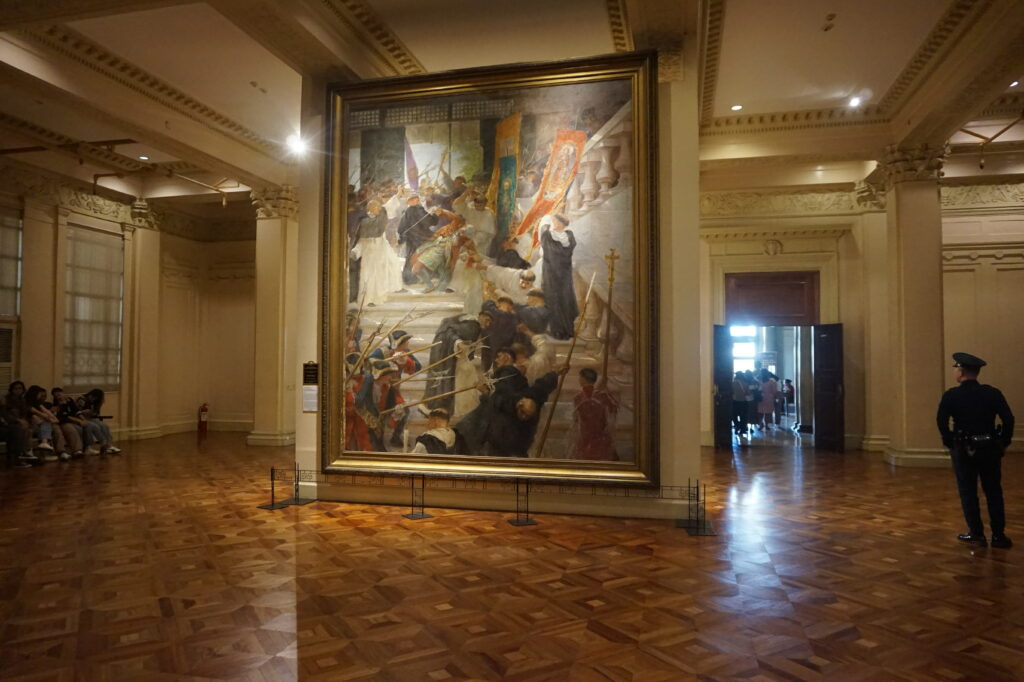
Visiting Essentials – Opening Hours and Ticket Prices
The National Museum of Fine Arts Manila welcomes art enthusiasts and history buffs with open arms from Tuesday to Sunday between 9 AM And 6 PM. Entrance to this repository of national pride is free for all visitors.
You need to present an ID card to enter. I didn’t have it with me and showed a picture of my passport and that was okay, but I recommend bringing an ID card. Bags are not allowed inside, but I felt very safe leaving my bag in their storage there, also for free.
The museum offers information in multiple languages and has staff ready to assist visitors from around the globe.
Planning Your Visit to the National Museum of Fine Arts
To fully savor the museum’s offerings, planning is key. Weekdays are generally less crowded compared to weekends, providing a more tranquil atmosphere. Early mornings right after opening or late afternoons before closing are ideal times to visit. Don’t forget to wear comfortable shoes as you’ll be exploring multiple galleries, and maybe the whole city that day!
How to Reach the National Museum of Fine Arts Manila
Located in the historical district of Intramuros, the museum is easily accessible by public transportation, including jeepneys, buses, and the LRT (Light Rail Transit). For those driving, parking is available but can be limited, so arriving early is advised. The other National Museums are in walking distance.
The Main Attractions – Highlights of the Collection
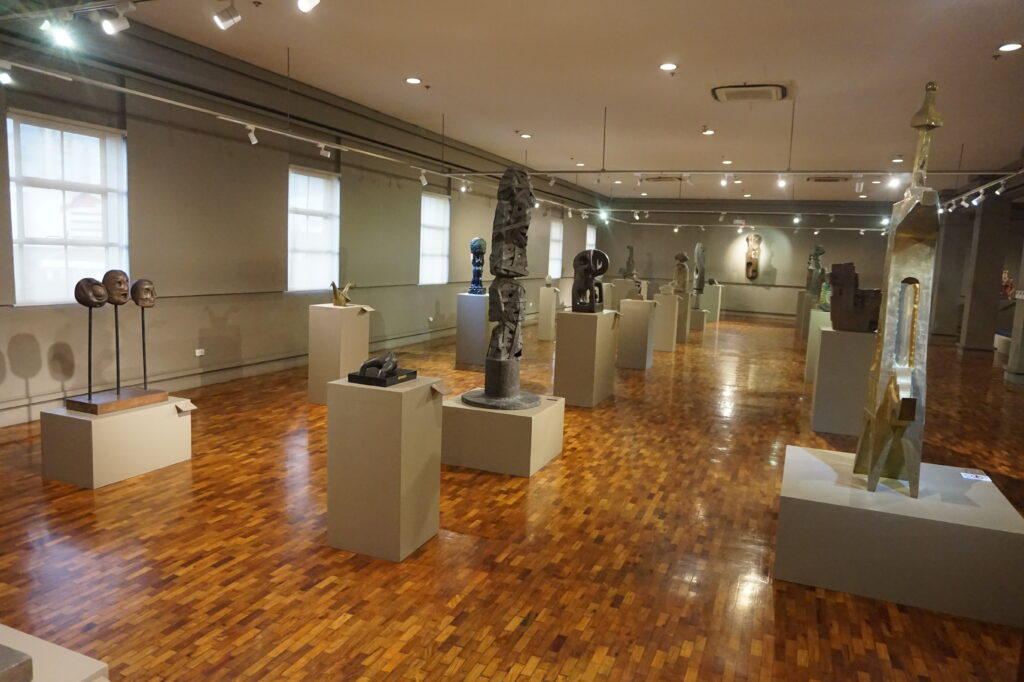
The heart of the museum is its diverse collection, featuring works from renowned Filipino artists such as Juan Luna and Félix Resurrección Hidalgo.
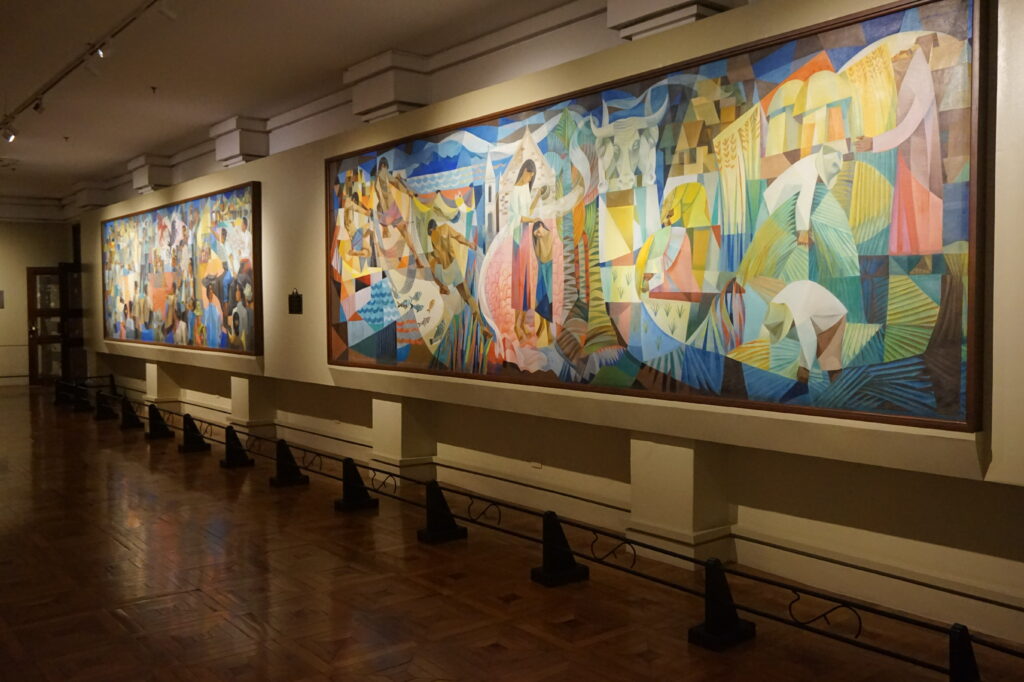
Not to be missed is Luna’s “Spoliarium,” an imposing piece that depicts Roman gladiators. Equally compelling are the sculptures, traditional crafts, and historical pieces that narrate the Filipino story across centuries.
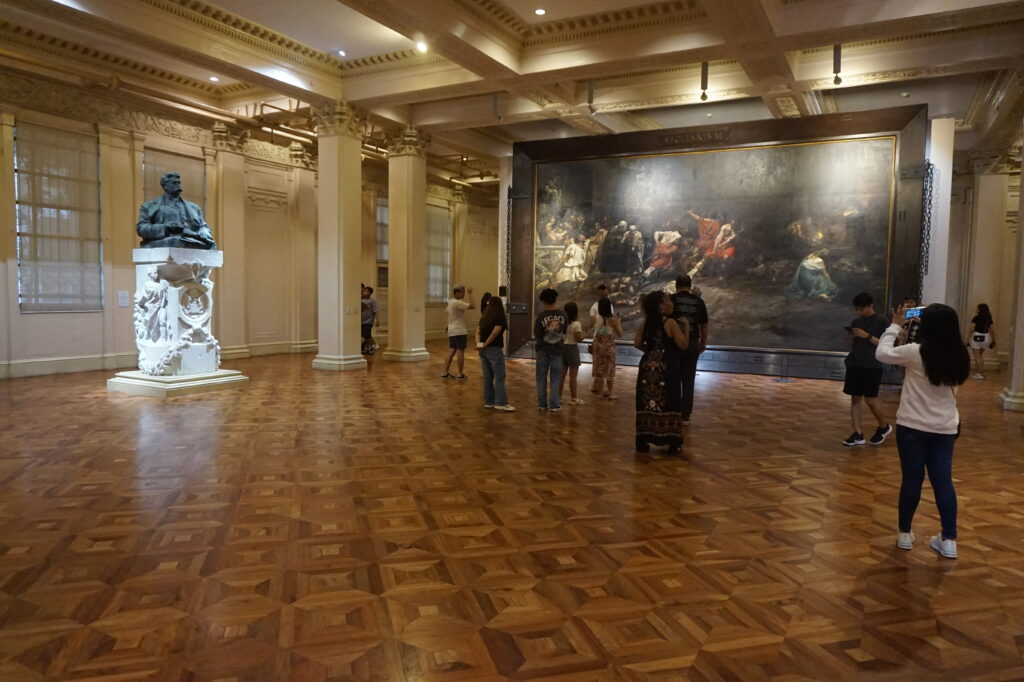
Spoliarium, by Juan Luna
The Building Is Also An Attraction!
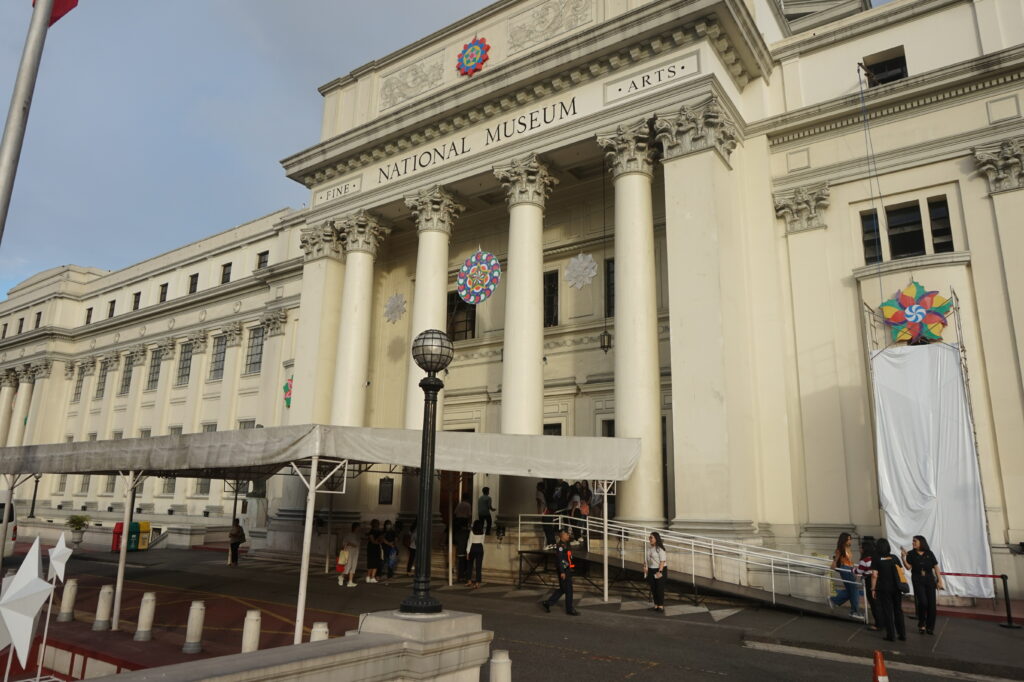
The beautiful building is from 1940 and designed in neoclassical style by Filipino Architect Antonio Toledo. (Source).
Making the Most of Your Museum Visit
The National Museum of Fine Arts offers more than just passive viewing. Engage with the art through guided tours, available in various languages, which delve deeper into the stories behind the masterpieces. Educational workshops and seasonal exhibitions provide fresh perspectives and reasons to return.
If you are more than 20 people it should be booked in advance for a guided tour, do that through their website here!
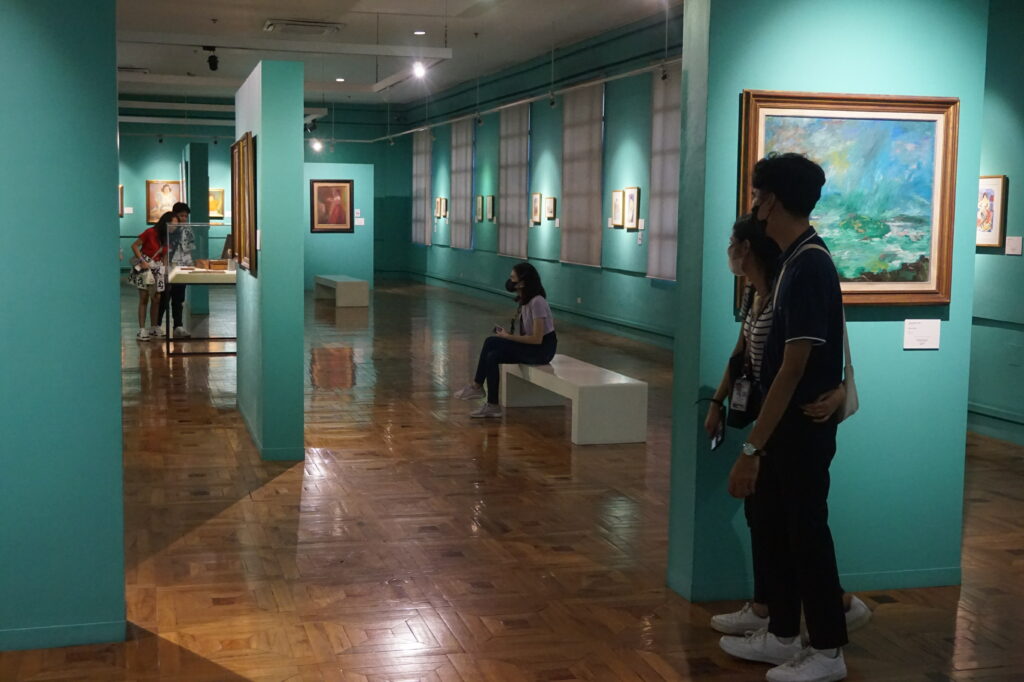
Visitor Information: Rules and Guidelines
To preserve the sanctity and integrity of the museum, eating, drinking, and the use of flash photography are prohibited.
Visitors are encouraged to keep noise to a minimum and follow all posted guidelines to ensure a pleasant experience.
Beyond the Museum – Exploring Nearby Attractions
A visit to the National Museum of Fine Arts can be the start of a full-day cultural immersion. Nearby attractions include the National Museum of Anthropology, National Museum of natural history, Rizal Park, and the historic walls of Intramuros, Fort Santiago, San Agustin Church, each offering its own unique insights into Filipino history and culture.
Is the National Museum of Fine Arts Manila Worth It?
Absolutely. The museum not only showcases the artistic genius of the Filipino people but also serves as a mirror reflecting the nation’s soul. Its collections span the pre-colonial era to contemporary times, offering a comprehensive look at the Philippines’ cultural evolution. For tourists and locals alike, it’s an enriching experience that deepens appreciation for the country’s heritage.
The National Museum of Fine Arts Manila is not just a destination but a journey through the Filipino spirit, articulated through art and history. Whether you’re a long-time admirer of Filipino culture or a curious traveler, the museum offers a profound, immersive experience that resonates long after your visit.


